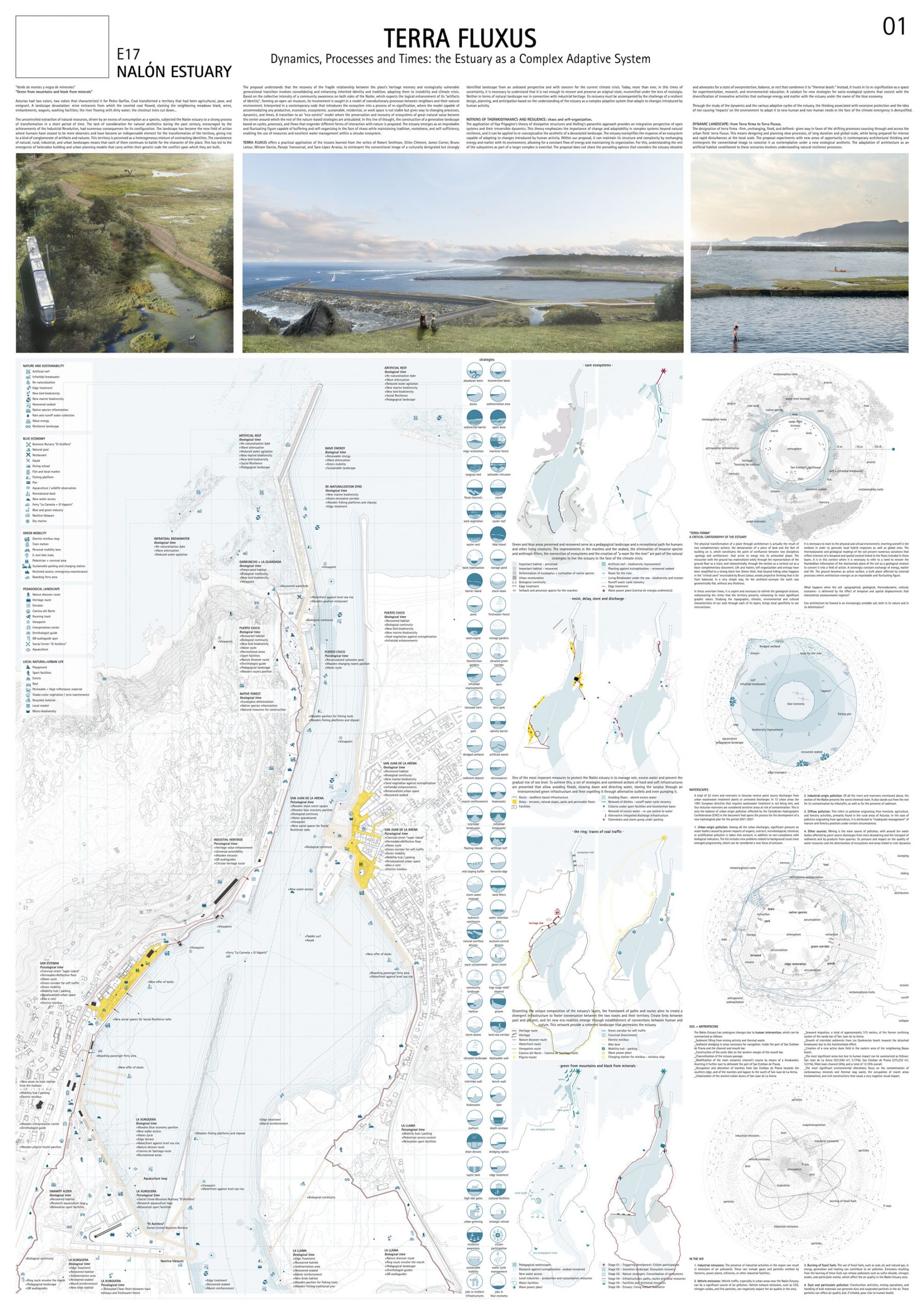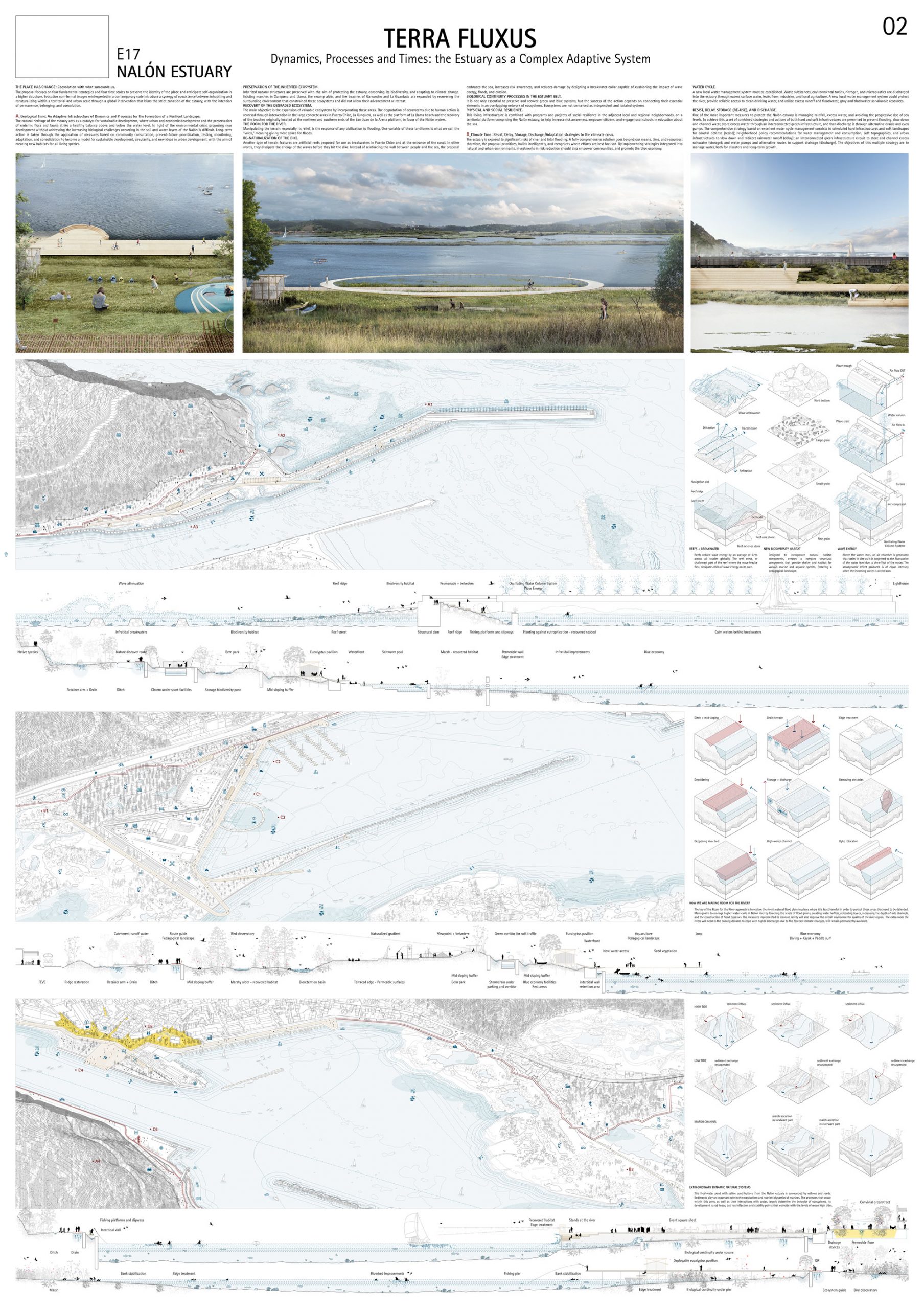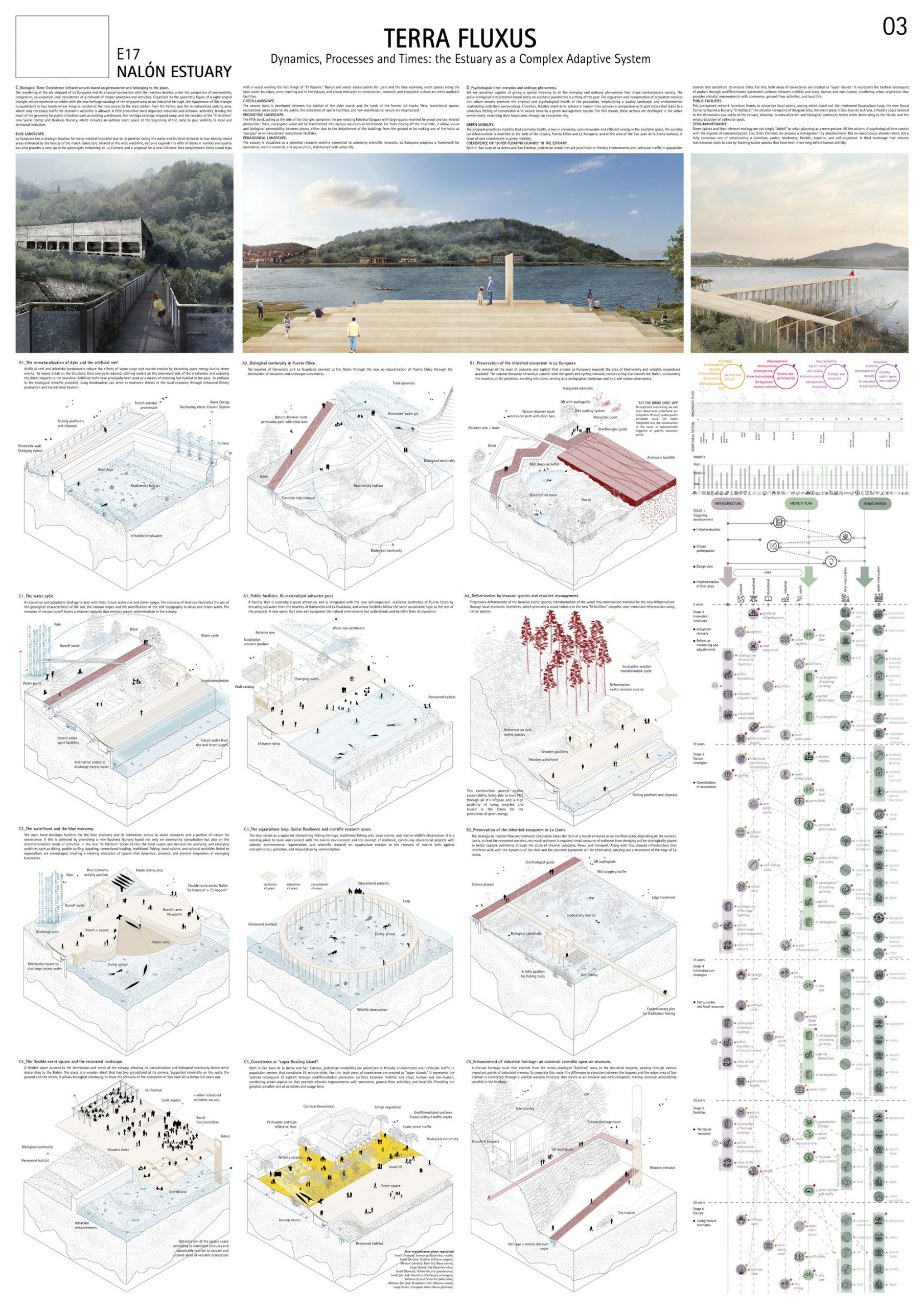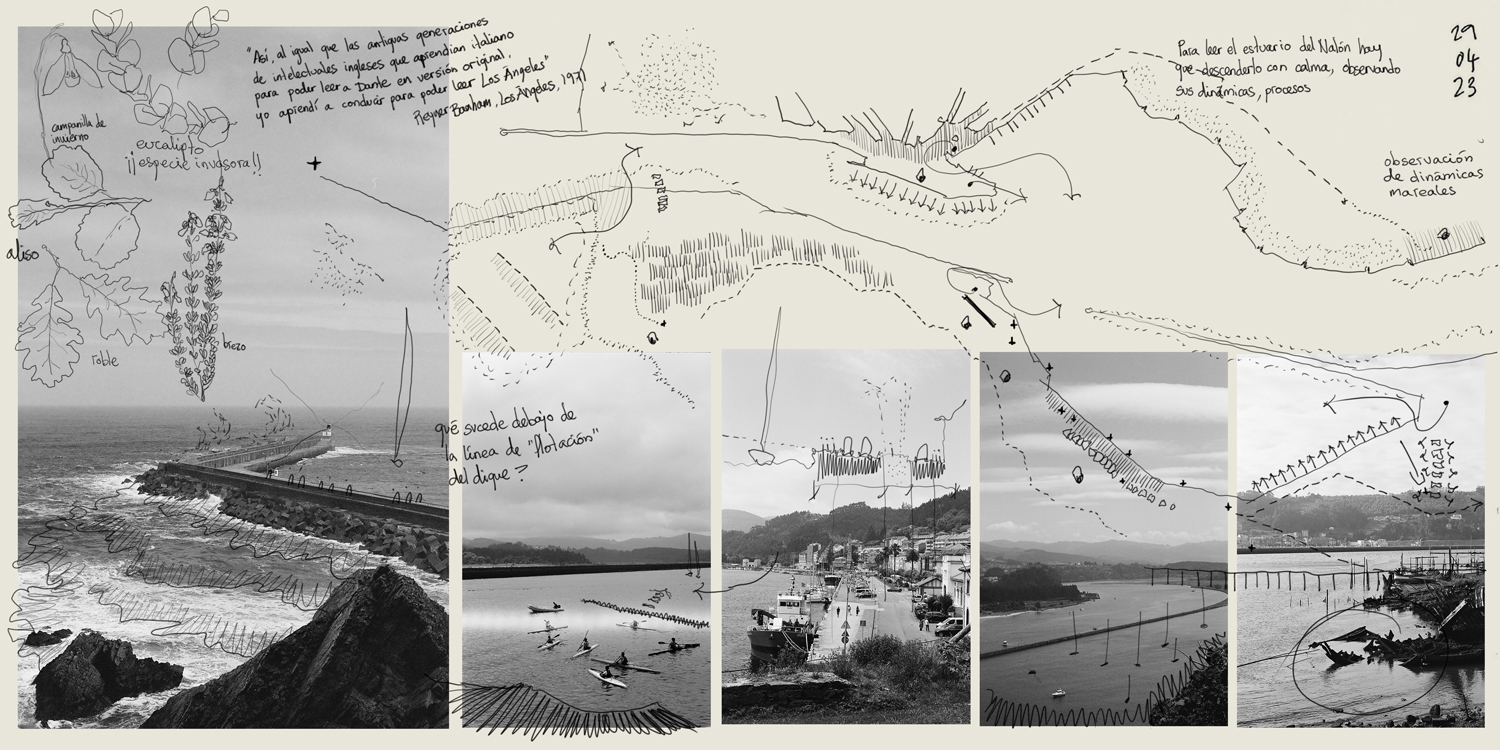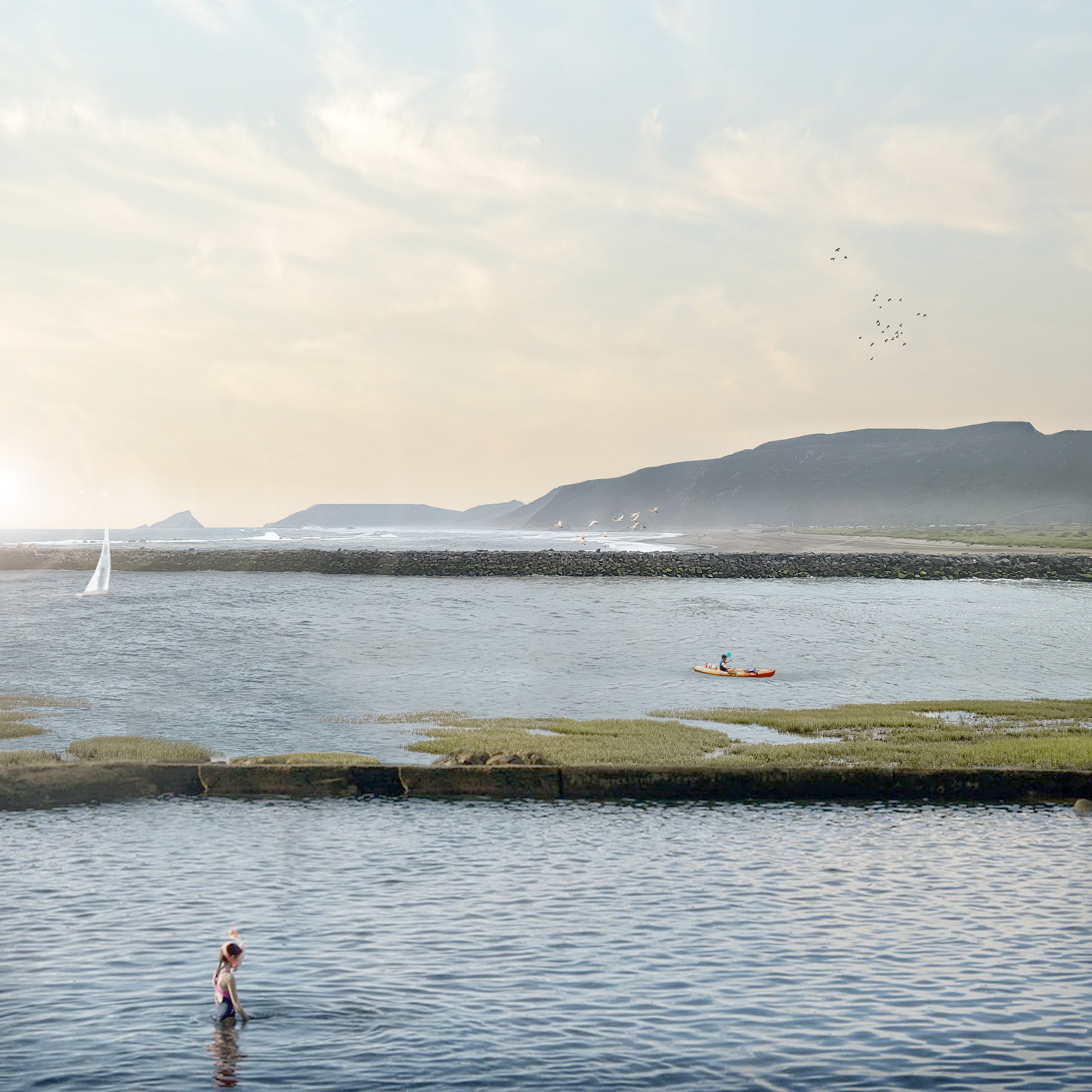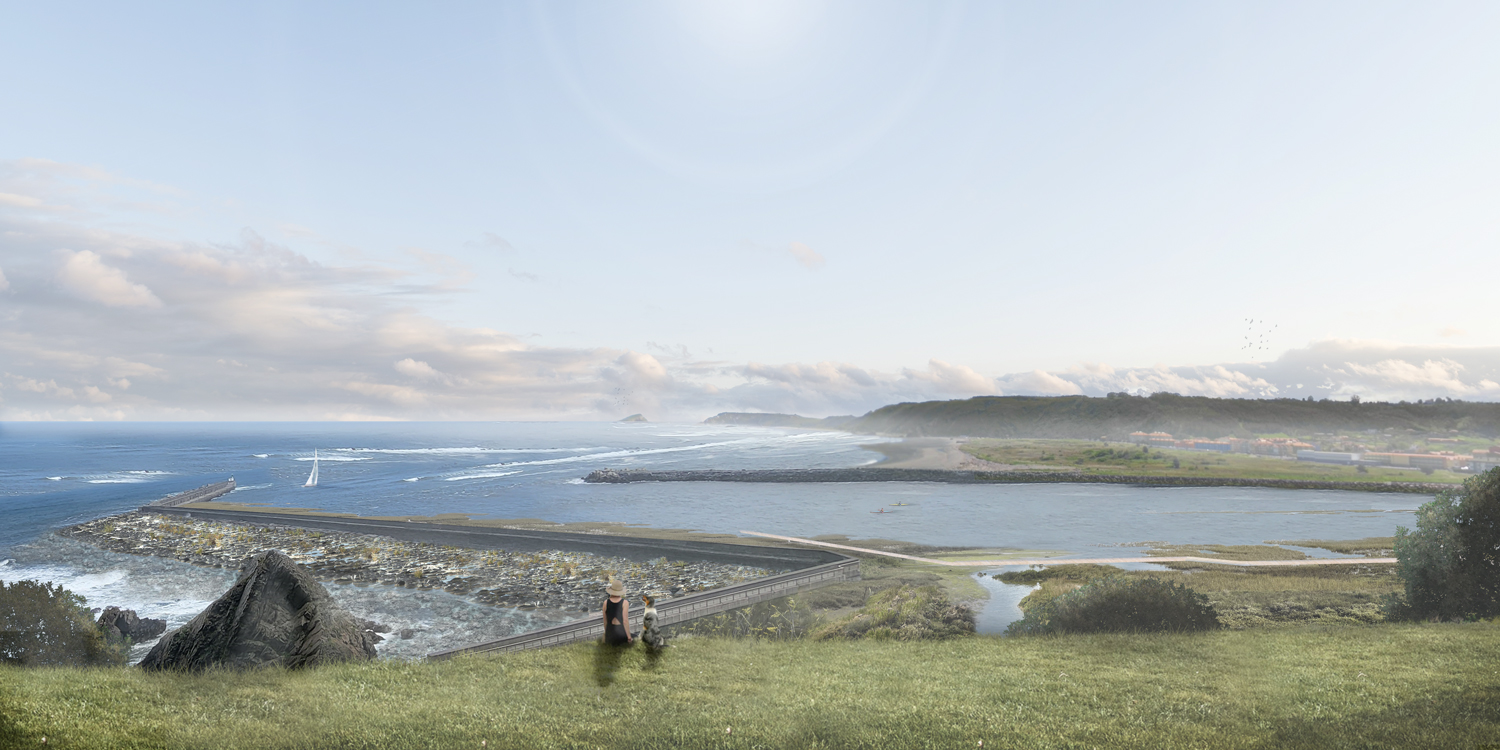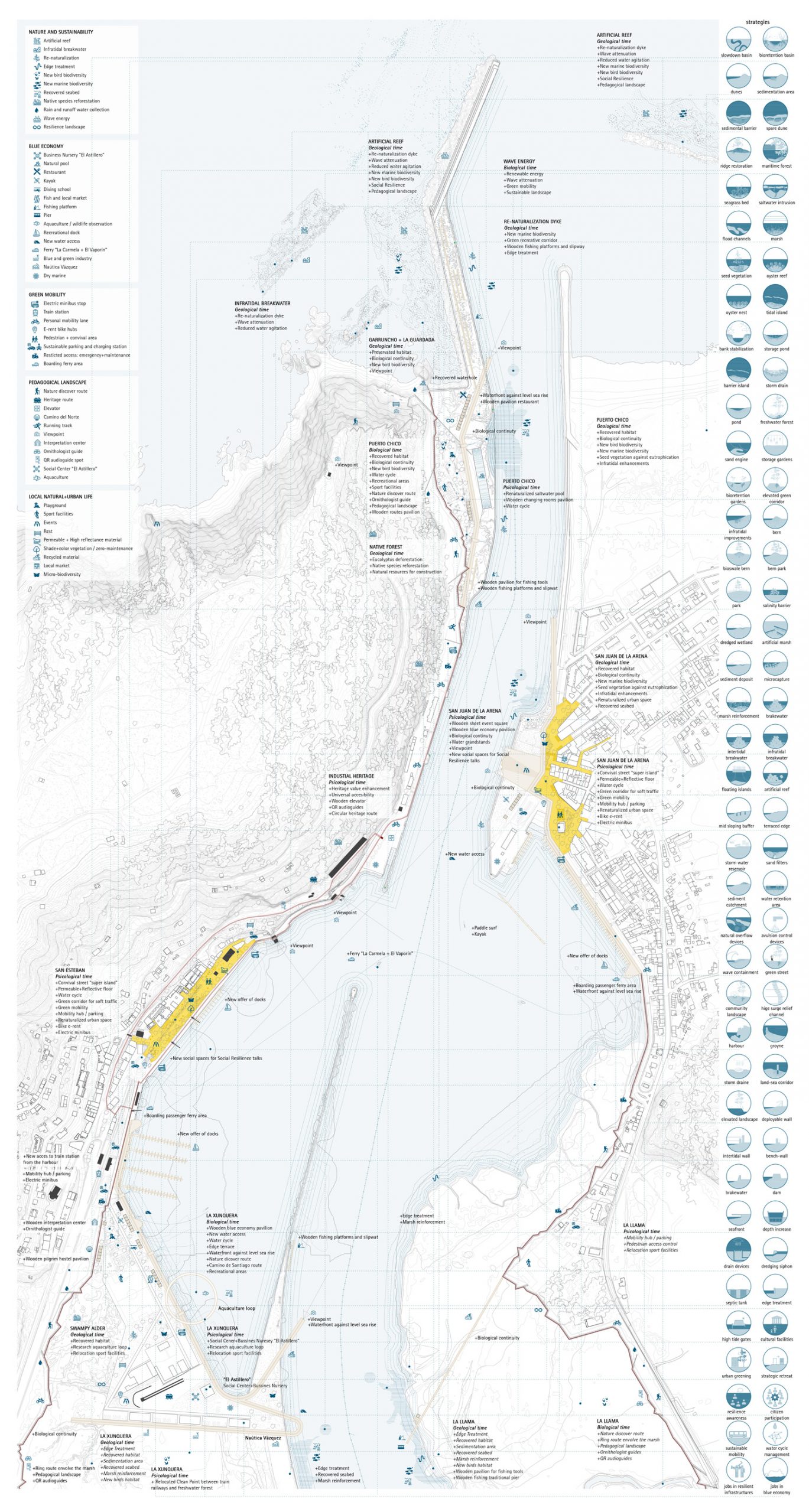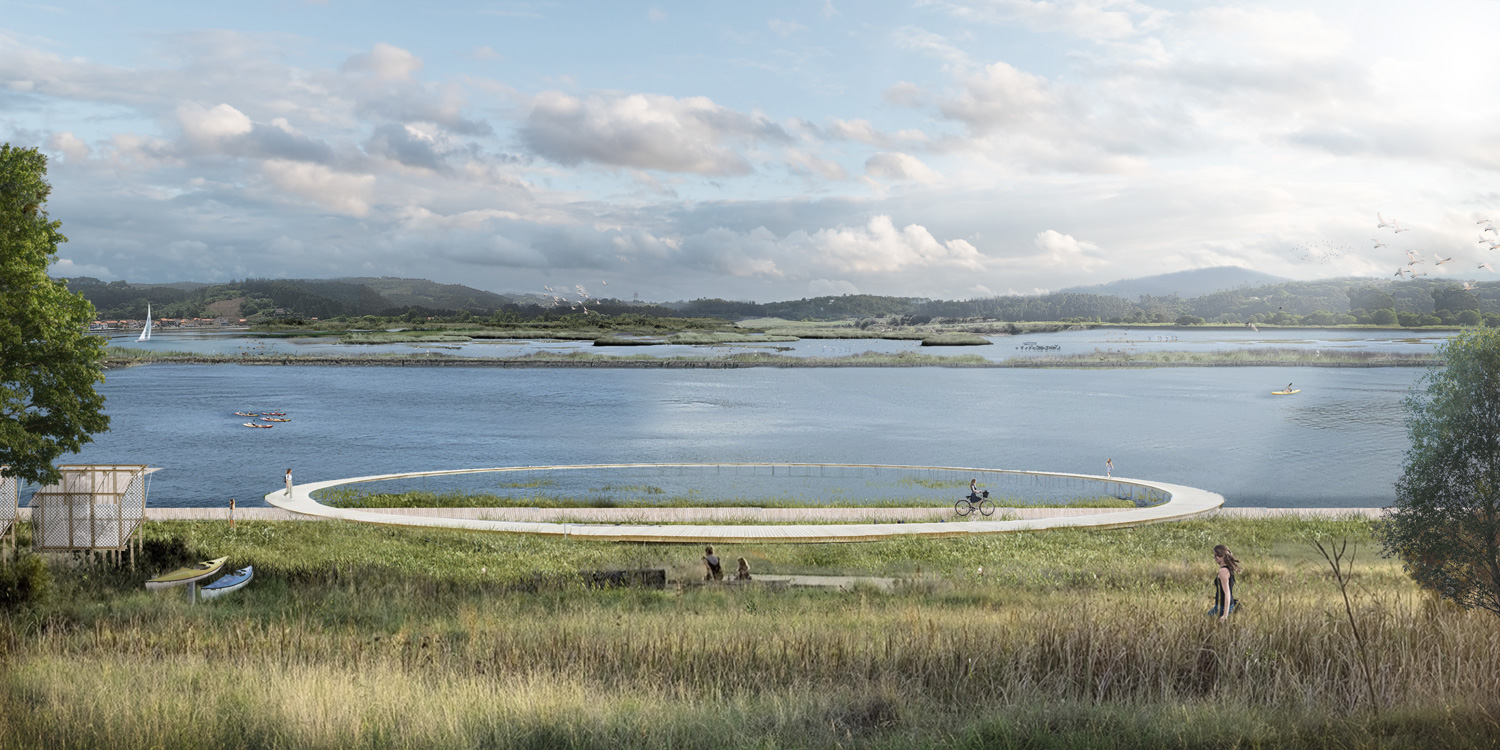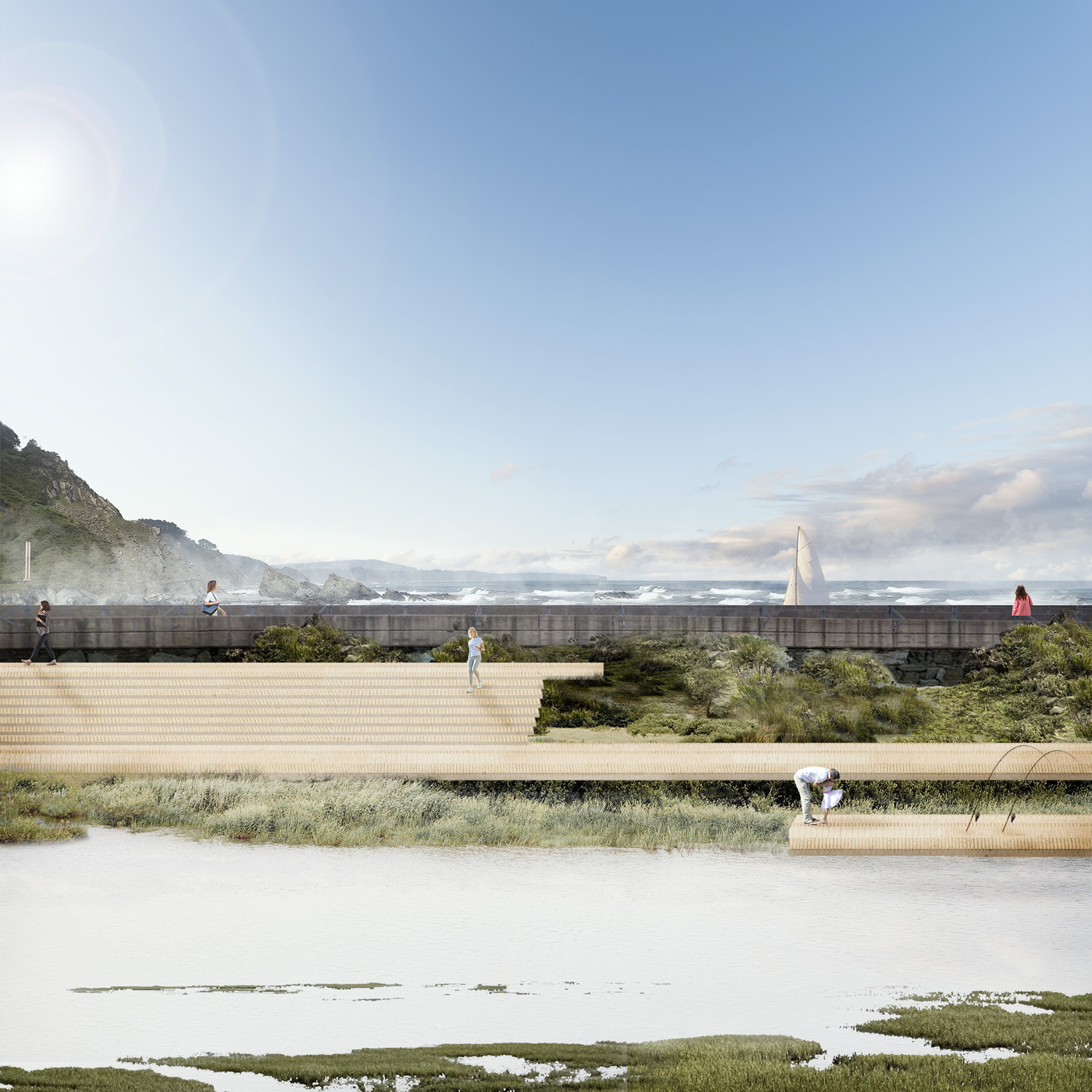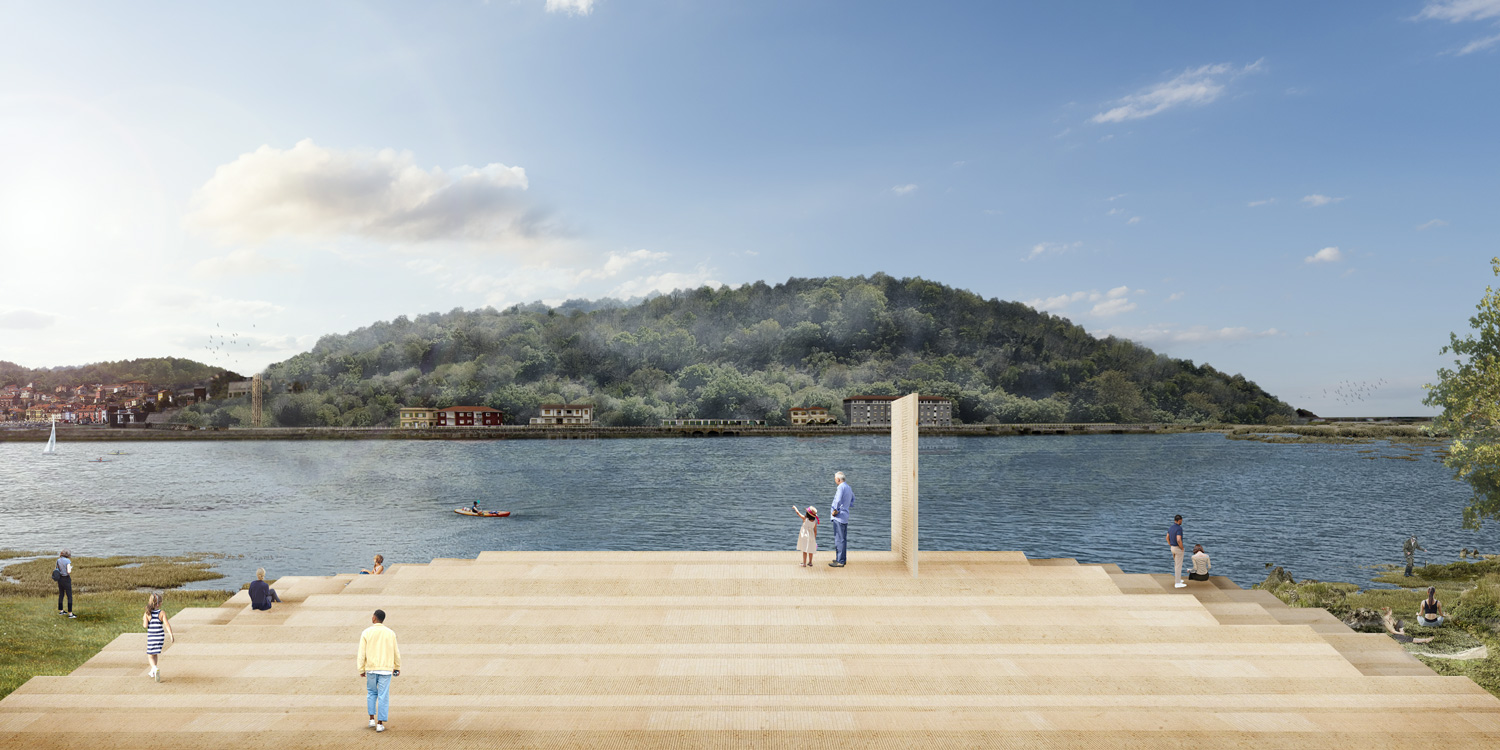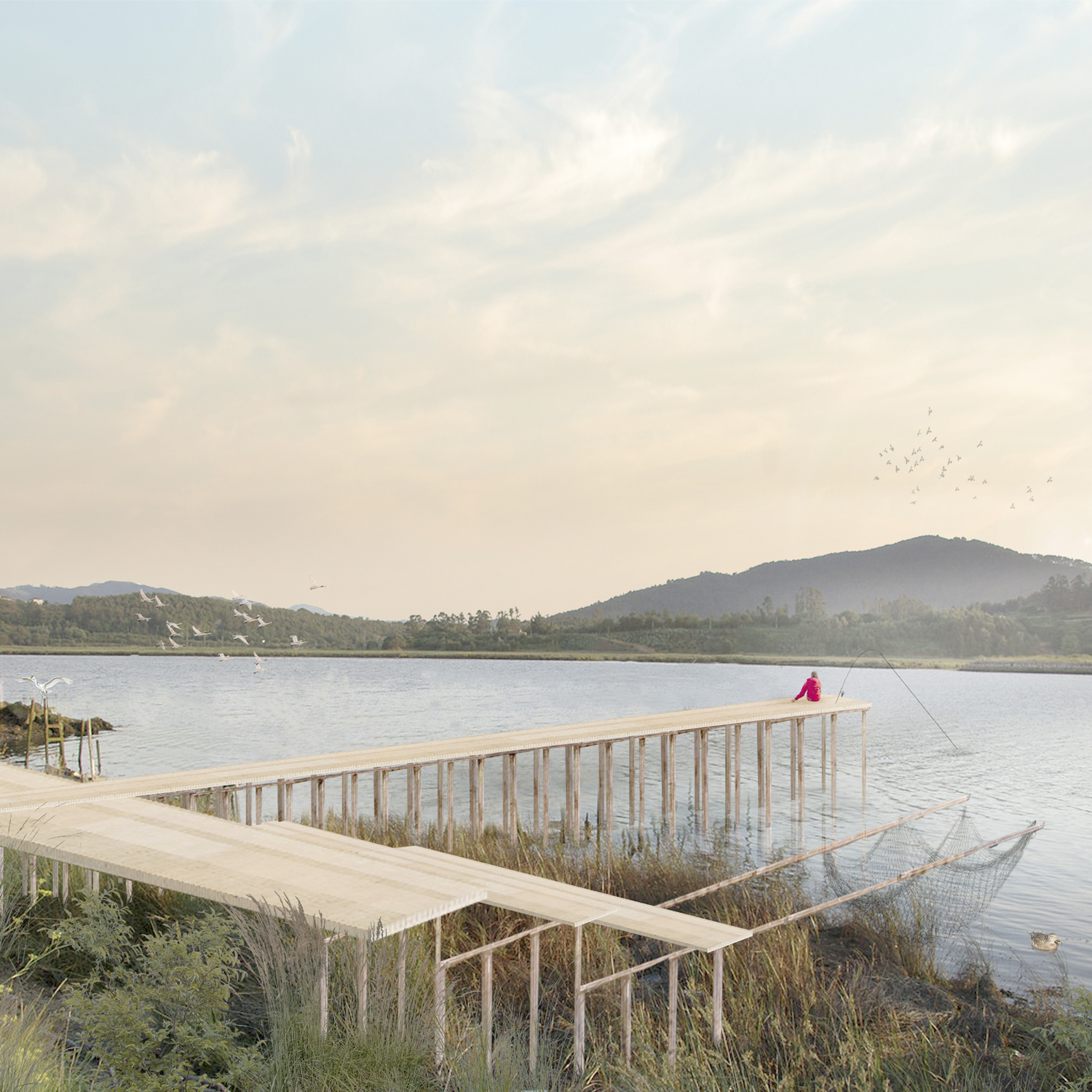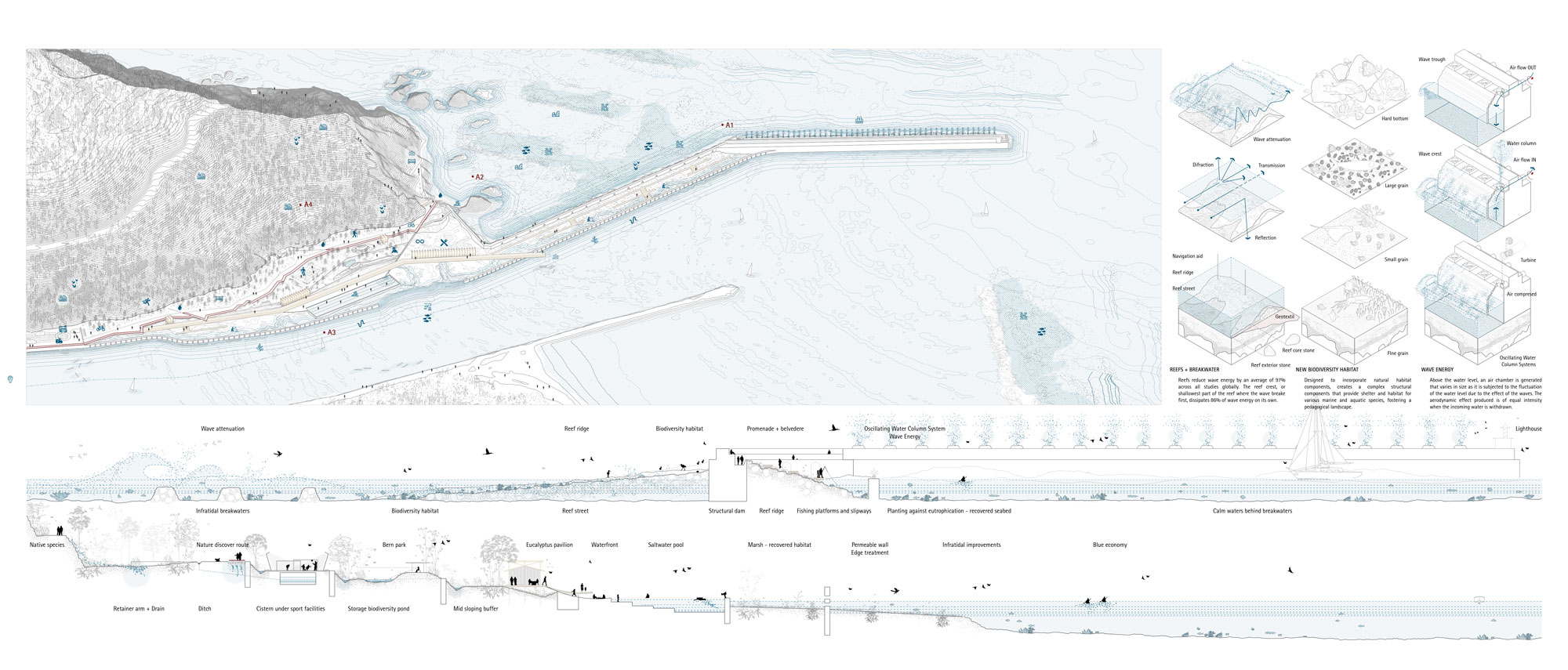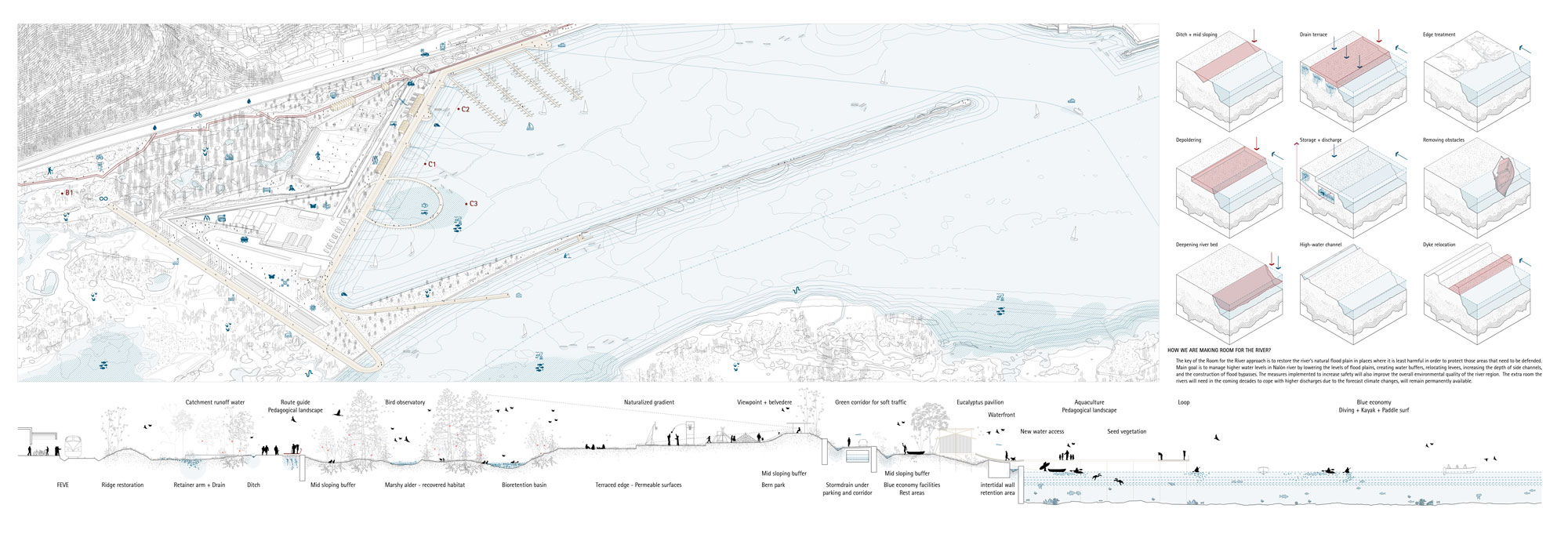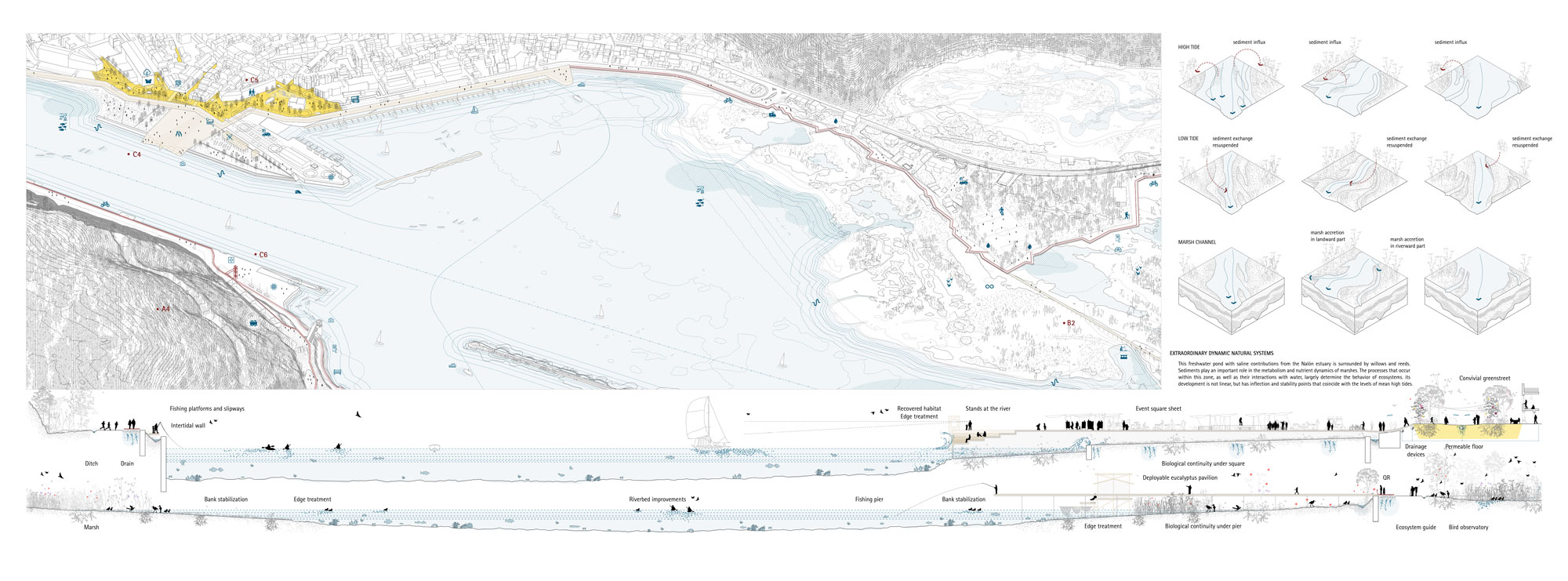☉ Terra Fluxus is an honour mention competition entry by Cruz Atelier and Pablo Paradinas for Europan in 2023. It is located in San Juan de la Arena Spain in a seaside and riverside setting. Its scale is extralarge with a surface of 2.500.000 sqm.
«Green from mountains and black from minerals». Asturias had two colors, two colors that characterized it for Pedro Garfias. Coal transformed a territory that had been agricultural, poor, and emigrant. A landscape devastation: mine entrances from which the coveted coal flowed, staining the neighboring meadows black, wires, embankments, wagons, washing facilities; the river flowing with dirty water; the chestnut trees cut down…
The uncontrolled extraction of natural resources, driven by an excess of consumption as a species, subjected the Nalón estuary to a strong process of transformation in a short period of time. The lack of consideration for natural aesthetics during the past century, encouraged by the achievements of the Industrial Revolution, had numerous consequences for its configuration. The landscape has become the new field of action where humans have ceased to be mere observers and have become an indispensable element for the transformation of the territory, giving rise to a kind of conglomerate of artifacts and natures.
What were once natural valleys with rural economic and social structures became fragmented clusters of unexpected density coexisting with the footprint they were perpetrating on the territory. The proposal understands that the recovery of the fragile relationship between the place’s heritage memory and ecologically vulnerable generational transition involves consolidating and enhancing inherited identity and tradition, adapting them to instability and climate crisis.
TERRA FLUXUS seeks involvement in a model of co-evolutionary processes of the early communities between neighbors and their natural environment. Interpreted in a contemporary code that integrates the ecosystem into a process of redefinition where the model capable of accommodating any productive, economic, ecosystemic, sustainable, residential, or work-related space is not fixed, but yields in favor of changing processes, dynamics, and times.
The construction of a generative landscape is proposed based on cycles, processes, and flows that give rise to different forms of interaction with nature. The estuary emerges as an improbable and fluctuating figure capable of buffering and self-organizing in the face of chaos while maintaining tradition, roots, and self-sufficiency, enabling the utilization of resources and excellent water management within a circular ecosystem.
